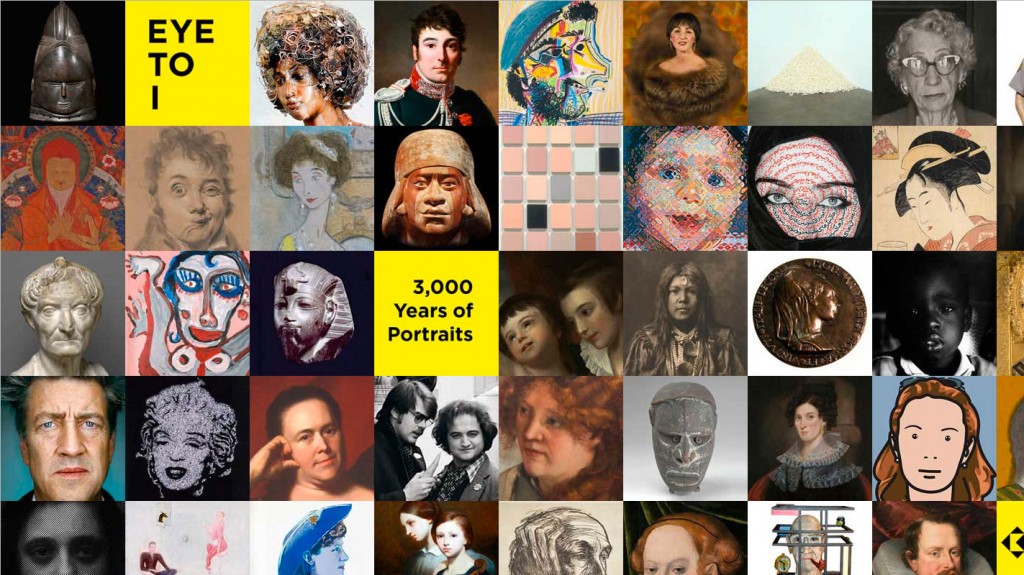
Screenshot of the Katonah Museum of Art “Eye to I” exhibition website, eyetoi.org.
In February, I took my high school students to see Eye to I at the Katonah Museum of Art. The sixty artists featured in this show (including Art21 artists Oliver Herring and Cindy Sherman) have taken very different approaches to portraiture.
Students were greeted with Vik Muniz’s diamond portrait Marilyn Monroe which led to Charlie (1990), a sculpture by Duane Hanson. Then, we encountered two mid-size galleries where 3,000 years worth of beautifully arranged portraits unfolded before us.
During our time at the museum, students were asked to pick four artworks that redefined portraiture for them. They were encouraged to choose not only portraits they felt were beautiful or well composed, but also works that challenged them to think about the show’s theme. The field trip was intended to present my students with forms of portraiture they weren’t used to seeing.
In reflecting on this exercise and whether or not students “got it,” I returned to some of their written reflections:
On Michael Ferris Jr.’s Toufic:
“It’s not only a sculpture, it’s a sculpture made from wood scraps! Usually portraits are created as drawings, paintings, or photographs, but this has two different aspects that challenge me—the pattern all over and then this idea that it was literally made with scraps.”
On Anne-Kann Furunes’s Portraits of Archive Pictures, VIII:
“This piece is, in a way, interactive. It moves as I move. Then when you get close you realize it’s a black canvas with different sized holes in it!”
On Gordon Parks’s Little Richard:
“This is different because it focuses on the dark more than the light. This darkness seems to be telling a story about the boy.”
On Felix Gonzalez-Torres’s Untitled (Portrait of Dad):
“It’s an interactive piece that actually allows the viewer to take something away. But it doesn’t depict the person; it’s just a pile of candy. Then you realize what the candy represents and all of the connections—the weight and this idea of giving.”
Allowing students to see traditional and contemporary examples of portraiture side by side in Eye to I helped them think about some of the assumptions and preconceptions we might make about art. Bravo to the Katonah Museum of Art for putting together a show that provokes visitors to reconsider what a portrait is, does, and can be.